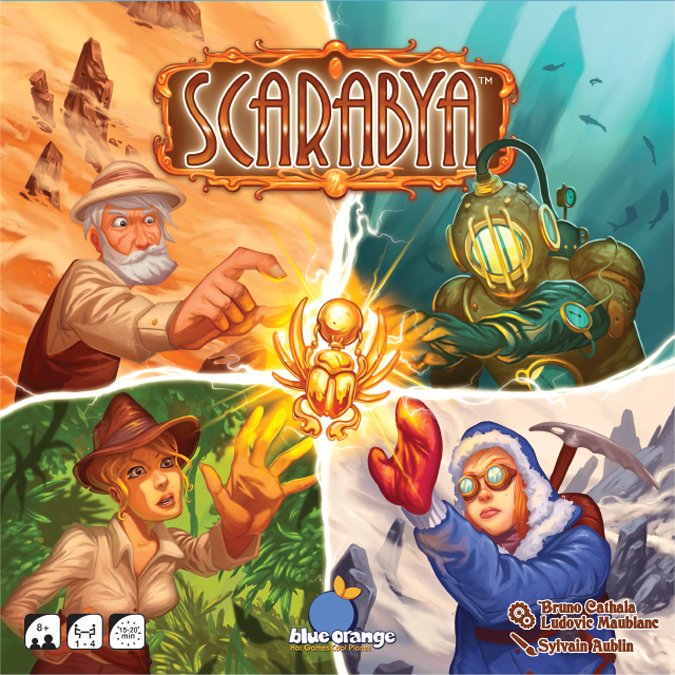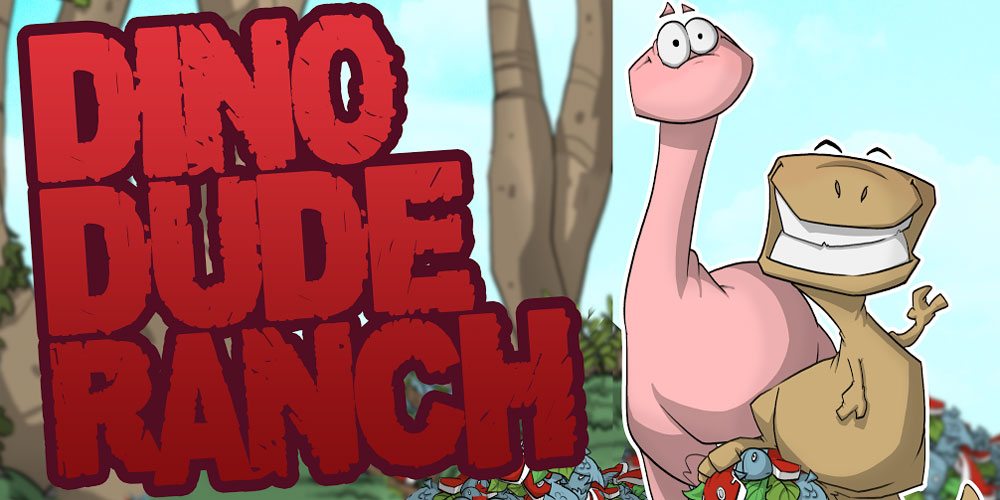Archaelogists seek out the valuable scarab amulets in various locations, each trying to collect the most relics in their dig site. Who will uncover the mysteries of Scarabya?
What Is Scarabya?
Scarabya is a tile-laying game for 1 to 4 players, ages 8 and up, and takes about 20 minutes to play. It was released at Gen Con this year, and is now available online and in stores, with a retail price of $29.99.

Scarabya Components
- 4 frames (1 per player)
- 16 boards (4 per player)
- 48 tiles (12 per player)
- 32 rocks (8 per player)
- 72 Scarab tokens (in values 1, 2, 3, and 4)
- 12 Mission cards
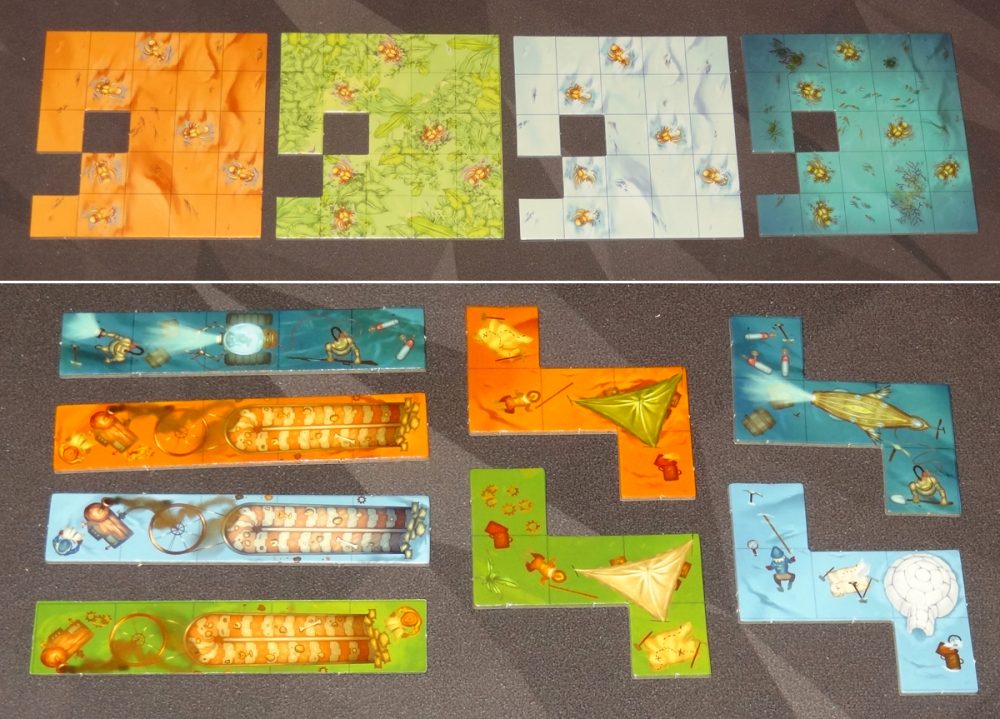
Each player has an identical set of components: a frame, four square boards with holes in them for the rocks, and a set of 12 pentomino tiles. The four sets have different color schemes and represent four different locations—desert, snow, jungle, and the ocean floor—with illustrations that vary from player to player depending on the location. The boards and pentominoes all have little details showing explorers and their gear.

The rocks are small plastic pieces with square bases that fit into the holes on the boards. They come in two different heights, though there’s no gameplay difference in the heights.
The “frames” are cardboard borders that hold the four sections of your board in place, allowing for multiple configurations of the board—be sure not to throw those out when you punch out the cardboard. I did find the quality of the cardboard a little disappointing, which was surprising to me for a Blue Orange title. The cardboard is pretty flimsy, and the border is a bit bigger than the board sections, so they jostle around a little in the frame. That’s better than a frame that’s too small, but it’s a noticeable gap.
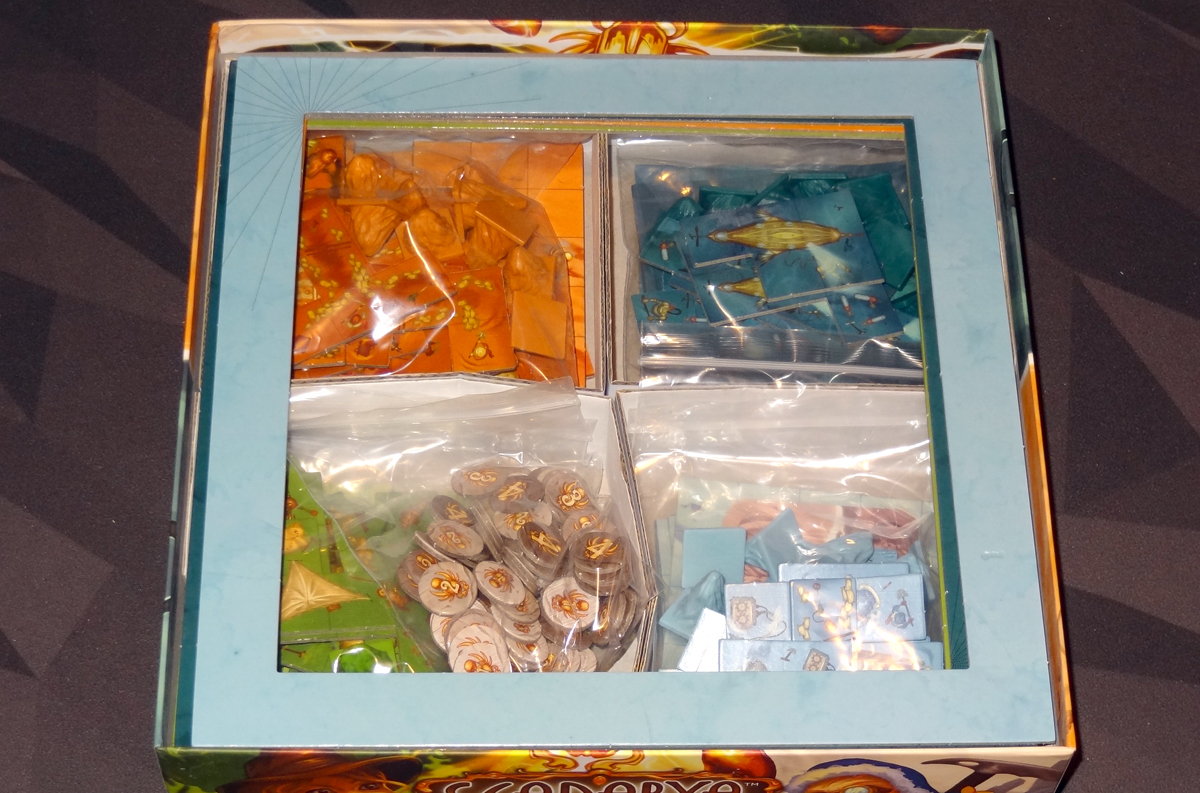
The box insert is just four cardboard pieces that divide the box up into quadrants, one for each player color—a bit like the dividers in Photosynthesis. The frames sit on top. It’s nothing fancy, but it works fine.
Overall, the components look nice but feel a little cheap, which isn’t my usual impression with Blue Orange.
How to Play Scarabya
You can download a copy of the rulebook here.
The Goal
The goal of the game is to score the most points by surrounding scarabs in excavation areas.

Setup
One player should set up their four boards in their frame (along with the rocks), and all other players should copy the same setup. Place your tiles nearby, and the scarab tokens in the center of the play area. Shuffle the mission cards.

Gameplay
For each round, flip over the top card of the mission deck. Each player must play the tile pictured on the card onto their own board. The first tile of the game must cover at least one of the four central squares, and each subsequent tile must connect with another tile (not diagonally). Tiles may not be placed on rocks, overlap each other, or extend outside of the frame. Tiles may be rotated or flipped in any orientation.

As you place tiles, you will create “excavation areas.” An excavation area is a section of 1 to 4 squares enclosed by your tiles, the frame, and rocks. When you do so, all scarabs inside the excavation area are scored: each scarab in an excavation area is worth a number of points equal to the size of the area. So a scarab that is fully enclosed in a single square is worth 2 points, but a scarab enclosed in a 4-square area is worth 4 points. In the photo above, there are two 4-point scarabs and a 1-point scarab. Place scarab tokens on the scarabs equal to their values. (If you run out of the right value tokens, use smaller tokens that add up to the right score.)
You must place a tile if there is a legal space for it on your board; if not, the tile is discarded.

Game End
The game ends after all twelve mission cards have been used. Total up your scarab tokens; the highest score wins. (There’s no tie-breaker.)
One-on-One Variant
There’s a variant for a 2-player game, in which two players will play on the same board, taking turns flipping cards and placing tiles. When you create an excavation area and score scarabs, you keep the scoring tokens (instead of placing them on the board). If you cannot place a tile, you discard it and flip another card until you have placed a tile on your turn.
The game ends when all the mission cards have been used. If the second player did not get to place the same number of tiles as the first player, they gain 1 point for each leftover scarab that is not in an excavation area. Highest score wins.
Solo Variant
The solo variant is sort of reversed from the regular game: you play as the last surviving descendant of the ancient civilization, and you want to prevent the scarabs from being discovered. Play the game as usual, but your goal is to cover up all the scarab symbols instead of surrounding them in excavation areas. You win if you cover all the scarab symbols.
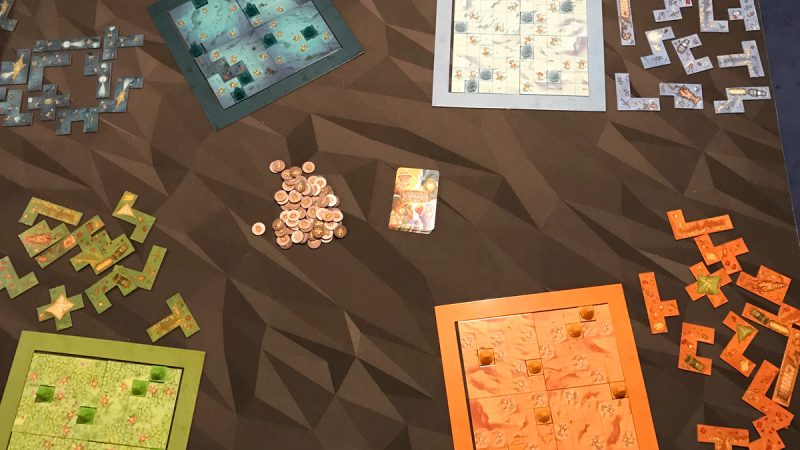
Why You Should Play Scarabya
Scarabya is a packing game, and reminds me a little of a couple of other games I’ve played in the past: City Square-Off and NMBR 9 both come to mind, because both of those games also challenge players to use the same sequence of tiles to score as high as possible. It’s essentially a solitaire game where you just compare scores at the end, so it really depends on whether you like that style of play. If you want more direct player interaction, the one-on-one variant provides a more strategic competition, but Scarabya is best for those players who like building their own board without outside interference.
I personally like packing games, so I don’t mind at all the feel of everyone playing individually, and I like to see at the end of the game how everyone’s boards differ even though we all used the same pieces in the same order. The downside, though, as with NMBR 9, is that it’s easy to look over at somebody else’s board and copy what they’re doing. In one game I played, my daughter’s board was identical to mine except for two tiles—and the last was only because I covered my board until she made her own choice. If your fellow gamers can’t keep their eyes to themselves, Scarabya may prove to be a bit boring, with tie scores every time.
Although I’m not impressed by the quality of the cardboard, the tiles and border do serve their purpose and the game is certainly playable—it’s just not as perfectly neat as I’d like it to be. The thickness of the tiles is also not much of a hindrance to game play, though I think thicker tiles would also highlight the difference between covered and uncovered areas, particularly in the desert and ice themes where there is less contrast between the tiles and the board. I did have one player who found it hard to remember that the rocks also closed off excavation areas because of the lack of visual contrast—but this was easily solved by trading rock pieces with another player.
Although it’s a packing game, it’s not about filling the space as efficiently as possible, as is the case in City Square-Off and NMBR 9. Instead, it’s about enclosing as many scarabs as possible in the largest possible area (4 squares) so that they’re the most valuable. That twist means that you’re forever trying out tiles in various positions, trying to figure out how to enclose several scarabs in a 4-square area without covering any up.
Of course, inevitably you’ll place tiles that will cover up scarabs, making them worthless. The trick is figuring out which ones to cover up. You’ll sometimes have to choose between taking a low-scoring scarab now, or trying to set up a 4-point scarab in case that one tile comes up next. There’s a bit of gambling involved, but since you know each tile will come up once, you can do some limited planning; that only goes so far, though, because you’re forced to play whatever tile comes up, like it or not.
If you like packing games and puzzle games, Scarabya is a nice twist on the genre. The four reversible board pieces allow for a huge number of possible configurations, and the variant play modes let you mix it up a little. Technically, you could even play the solo variant competitively with other players if you wanted to. I’d recommend it primarily for those who are okay with games that have little or no direct player interaction; it’s a game that you could play while having a conversation about other things since you wouldn’t want to say much about your moves until after it’s all over.
Look for it in your local game store, or order from Amazon.
Click here to see all our tabletop game reviews.
![]() To subscribe to GeekDad’s tabletop gaming coverage, please copy this link and add it to your RSS reader.
To subscribe to GeekDad’s tabletop gaming coverage, please copy this link and add it to your RSS reader.
Disclosure: GeekDad received a copy of this game for review purposes.

